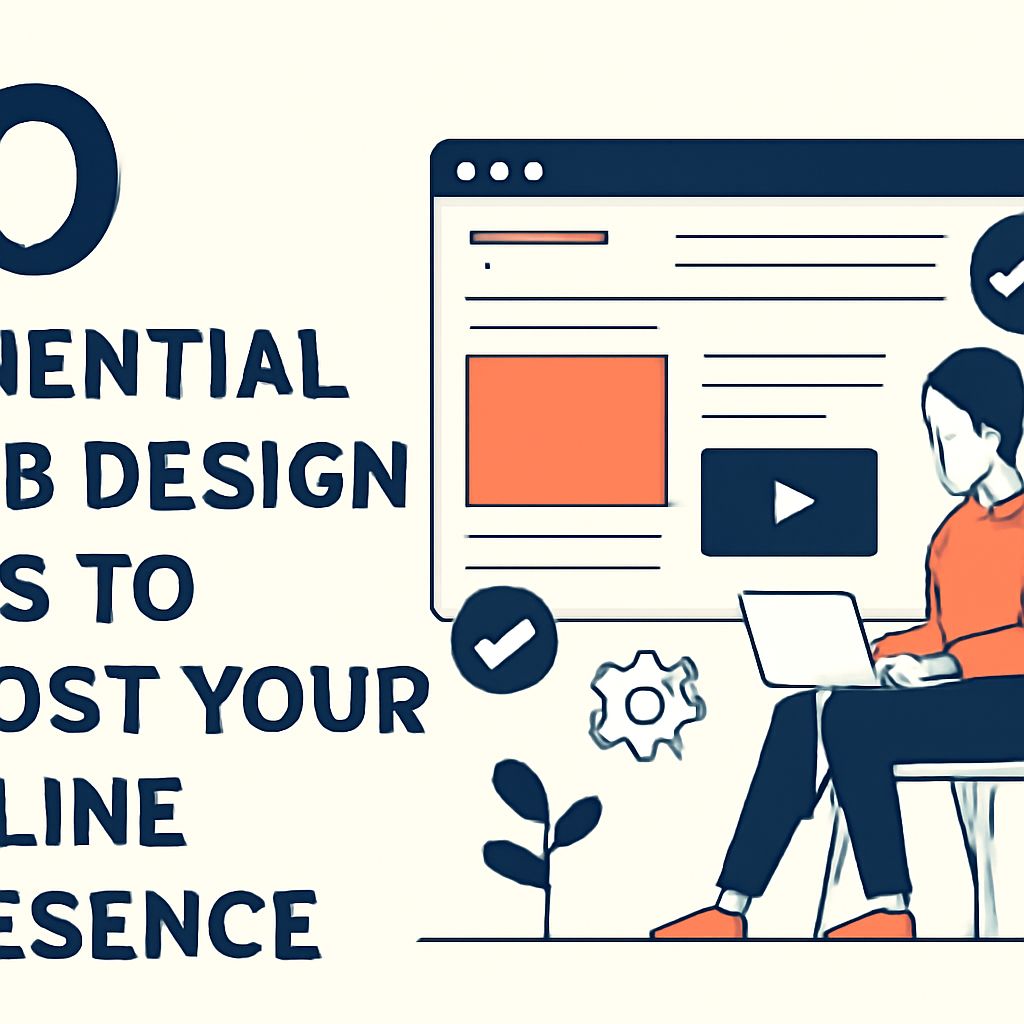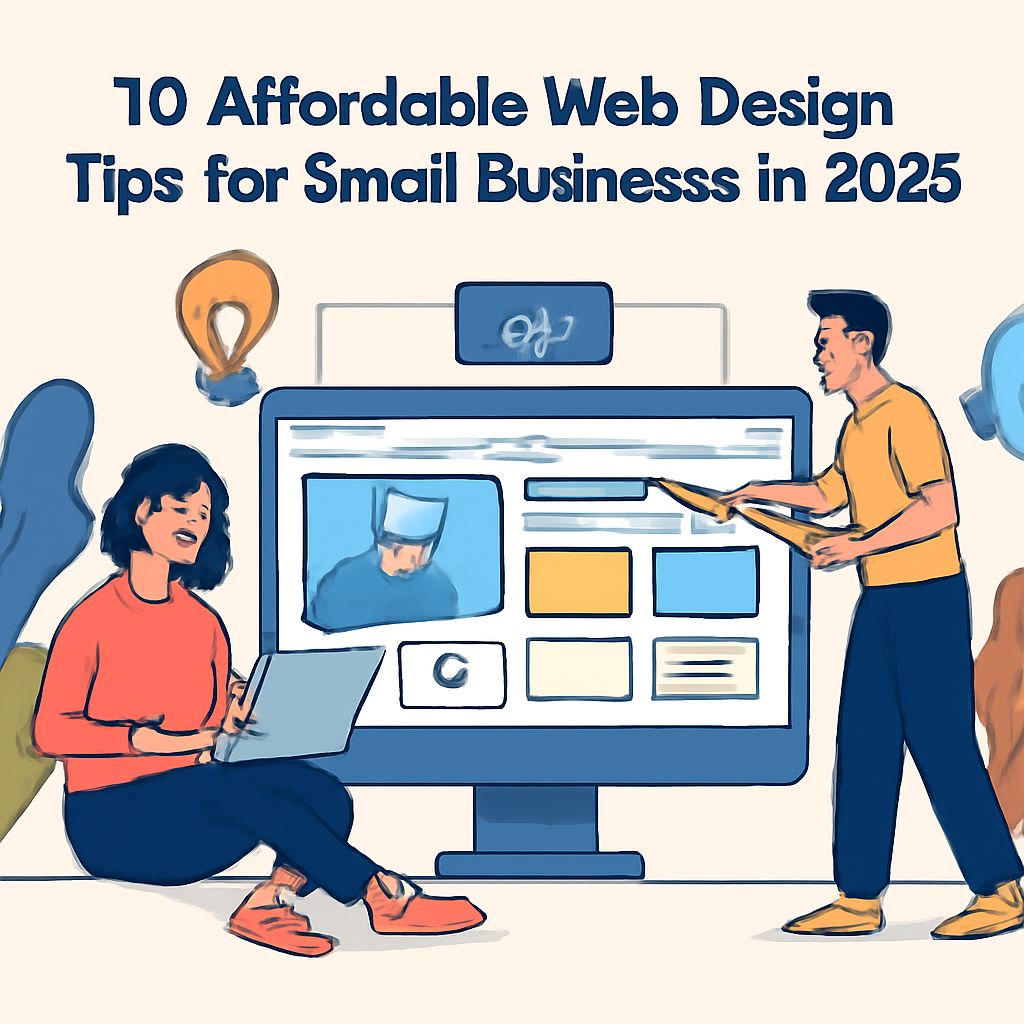10 Essential Web Design Tips to Boost Your Online Presence
In today’s digital landscape, having a strong online presence is critical for businesses, brands, and individuals alike. Your website is often the first point of contact for potential customers, and it reflects your brand identity. Therefore, effective web design plays a significant role in attracting visitors and keeping them engaged. Here are ten essential web design tips that can help you enhance your online presence.
1. Prioritize User Experience (UX)
User experience is the cornerstone of good web design. A website that is easy to navigate, visually appealing, and intuitive will keep visitors engaged and encourage them to return.
- Clear Navigation: Ensure your navigation menu is straightforward and accessible.
- Consistent Layout: Maintain a consistent layout across all pages to avoid confusing users.
- Mobile-Friendly: Optimize your site for mobile devices, as a significant portion of web traffic comes from smartphones and tablets.
2. Use a Responsive Design
A responsive design ensures that your website adapts seamlessly to different screen sizes, enhancing user experience across devices. Google also prioritizes mobile-friendly sites in its search results.
3. Focus on Loading Speed
Website loading speed is crucial for retaining visitors. A delay of just a few seconds can lead to a high bounce rate. Here are some ways to improve loading speed:
- Optimize Images: Compress images to reduce their file size without compromising quality.
- Minimize HTTP Requests: Limit the number of elements on a page, such as scripts and images.
- Use a Content Delivery Network (CDN): A CDN can distribute your site’s content across multiple servers worldwide, speeding up load times.
4. Choose the Right Color Scheme
The color scheme of your website can evoke emotions and influence user behavior. Here are some tips for choosing an effective color palette:
- Understand Color Psychology: Different colors can elicit different feelings. For instance, blue conveys trust, while red implies urgency.
- Use Contrasting Colors: Make sure there’s enough contrast between your background and text colors to enhance readability.
- Limit Your Palette: Stick to 2-3 primary colors and a few accent colors to create a cohesive look.
5. Implement Clear Call-to-Actions (CTAs)
CTAs guide visitors towards desired actions, such as making a purchase or signing up for a newsletter. Make your CTAs stand out:
- Use Action-Oriented Language: Phrases like “Get Started,” “Sign Up Now,” or “Shop Today” encourage immediate action.
- Position Strategically: Place CTAs where they are easily visible, such as at the top of the page or after engaging content.
- Make Them Eye-Catching: Use contrasting colors, larger fonts, and buttons to draw attention to your CTAs.
6. Optimize for SEO
Search engine optimization (SEO) is essential for increasing visibility in search engine results. Here are some ways to ensure your site is SEO-friendly:
- Use Relevant Keywords: Incorporate keywords naturally throughout your content, including titles and headers.
- Optimize Meta Tags: Write compelling title tags and meta descriptions to improve click-through rates.
- Utilize Alt Text for Images: Provide descriptive alt text for images to improve accessibility and SEO.
7. Incorporate High-Quality Visuals
Incorporating high-quality images and graphics can significantly enhance the aesthetics of your website. Visual content can also convey messages more effectively than text alone.
- Use Professional Images: Invest in high-quality photography or graphics that align with your brand.
- Infographics: Utilize infographics to present complex information in an easily digestible format.
- Videos: Adding video content can increase engagement and time spent on your site.
8. Write Compelling Content
Your website content should be engaging, informative, and relevant to your audience. Here’s how to create compelling content:
- Know Your Audience: Tailor your content to the interests and needs of your target audience.
- Use Clear and Concise Language: Avoid jargon and keep your writing straightforward.
- Update Regularly: Fresh content can improve your SEO ranking and keep visitors returning for more.
9. Utilize Analytics
Using analytics tools can provide insights into visitor behavior, allowing you to refine your web design strategy. Here are some key metrics to monitor:
- Traffic Sources: Understand where your visitors are coming from (organic search, social media, referrals).
- Bounce Rate: A high bounce rate may indicate that your content isn’t engaging enough or that your site isn’t user-friendly.
- Conversion Rates: Track how many visitors complete desired actions, such as signing up or making a purchase.
10. Test and Iterate
Web design is not a one-time task but an ongoing process. Regularly test and iterate your website based on visitor feedback and analytics data. Here are some methods for testing:
- A/B Testing: Test different versions of a page to see which performs better.
- User Feedback: Collect feedback directly from users to identify areas for improvement.
- Heatmaps: Use heatmap tools to visualize where users are clicking and how they navigate your site.
Conclusion
Implementing these ten essential web design tips can significantly boost your online presence. By prioritizing user experience, optimizing for speed and SEO, and consistently producing high-quality content, you’ll create a website that not only attracts visitors but also converts them into loyal customers. Remember that web design is an ongoing process, so continually test, learn, and adapt to keep your online presence strong.
FAQ
What are the key elements of effective web design?
Key elements of effective web design include user-friendly navigation, responsive layout, fast loading times, and visually appealing graphics.
How can I improve website loading speed?
You can improve website loading speed by optimizing images, minimizing CSS and JavaScript files, and using a reliable hosting service.
What is responsive web design and why is it important?
Responsive web design ensures that your website looks good on all devices, including desktops, tablets, and smartphones, which is crucial for user experience and SEO.
How does color choice impact web design?
Color choice impacts web design by influencing user emotions and behaviors, making it essential to choose a color scheme that aligns with your brand identity.
What role does SEO play in web design?
SEO plays a vital role in web design by ensuring that your website is structured in a way that search engines can easily index, improving visibility and traffic.
How can I make my website more user-friendly?
You can make your website more user-friendly by simplifying navigation, using clear calls to action, and ensuring that the content is easily readable.




